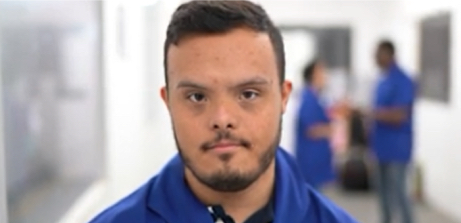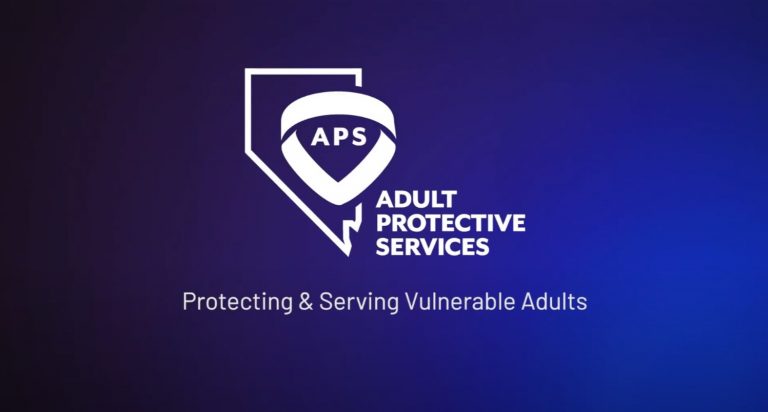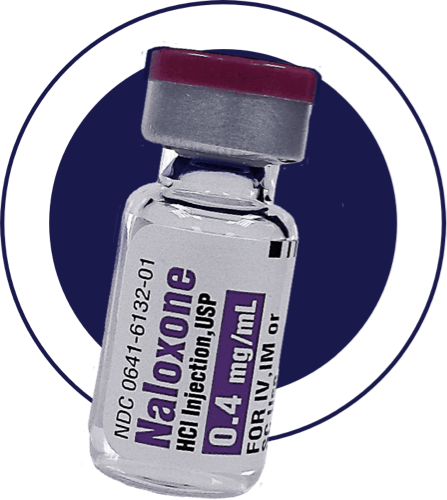The Opioid Epidemic is Impacting Our Most Vulnerable Populations.
Opioid Misuse Can Lead to Abuse, Exploitation, Neglect and Self-Neglect

Vulnerable adults can misuse opioids and be affected by others’ misuse of opioids. To protect vulnerable adults, we need to understand the dangers of opioid misuse, know the tell-tale signs of abuse and when to report to Adult Protective Services.
Know the Signs
Opioid misuse includes either the use of heroin or the nonmedical use of prescription pain relievers.
What to look for:
- Behavioral changes such as mood swings, irritability, severe energy level changes, drowsiness or “nodding off” excessively
- Physical appearance such as weight loss, slurring words, constricted pupils, an unbalanced gait or loss of coordination
- Problems with memory, appearing confused or disorientated
- Difficulty resolving problems or making decisions, slow to respond to questions
- Long-term use of opioid medications for chronic conditions (more than 200 days a year)
- Mixing opioid medications with benzodiazepines or alcohol
- Keeping unused or expired bottles of prescribed opioid medications “just in case”
- Using opioid medications for conditions not originally prescribed
- Borrowed opioid medications from friends or family members
- Having prescribed opioid medications from multiple prescribing physicians
- Losing prescriptions repeatedly or continually requesting more or stronger opioid medication
- Frequent falls while taking opioid medications
- Opioid related emergency room visits
- Buying opioid medications from illegal sources rather than obtaining a prescription
- Needle marks on arms/legs from injecting opioids
- Paraphernalia such as medication bottles with the labels ripped off, piles of burned tinfoil, bloodied cotton swabs in the trash, syringes/needles, rolled up dollar bills/straws
Infliction of pain or injury on a vulnerable adult.
What to look for:
- Abrasions, cuts or bruises
- Asphyxiation
- Hypothermia
- Untreated bed sores
- Broken or dislocated bones
- Burns or scalding
- Unexplained injuries or wounds
- Over sedation, poisoning
- Over/under medicating
- Friction from restraints
- Dehydration/malnutrition
Infliction of psychological or emotional anguish, pain or distress on a vulnerable adult.
What to look for:
- Harming, damaging or destroying property, including without limitation, pets
- Disregarding the needs of the vulnerable adult
- Threatening, controlling or intimidating the vulnerable adult
- Humiliation
- Verbal assaults
Any act taken by a person who has the trust and confidence of a vulnerable adult to obtain control of the vulnerable adult’s prescription opioid medication through either deception, intimidation, or undue influence with the intention of permanently depriving the vulnerable adult of ownership, use, benefit or possession of his or her property.
What to look for:
- Unauthorized signatures on checks or financial documents
- Unusual withdrawals from banks or other financial institutions
- Missing money or property
- Sudden and unusual bank activity
- Unusual purchases
- Frequent requests to fill prescription drugs
- Stealing prescribed medication
- Stealing of valuables, causing the vulnerable adult to be evicted from their home
- Adult children who misuse opioids moving back home with their parents
- Client is unable/fails/refuses to take in adequate amounts of food and fluids.
- Client has a noticeable weight loss or is showing signs of malnutrition.
- Client is eating food that is potentially unsafe or harmful to his/her health condition.
- Client is unable/fails/refuses to dress him/herself appropriately.
- Client is unable/fails/refuses to attend to personal hygiene and smells of foul odor.
- Client’s home is unclean and/or hazardous (e.g., soiled and smells of urine/feces or no running water, heat, or electricity).
- Client is unable/fails/refuses medical care and/or mental health services.
- Client is unable/fails/refuses to take his/her medication.
- Bills are unpaid/payments are late.
- Utilities are shut off or at risk of being shut off.
- Client is unable/fails/refuses to protect his/her money from scams or others.
Opioid Misuse Can Happen to Anyone
Would you ever think a loved one would be abused to gain access to their prescription opioid medications? It can happen to anyone. Hear the eye-opening stories of those who have first hand experience with the vulnerable populations suffering from opioid misuse.
Hear First-Hand Accounts of
How Opioid Misuse Can Impact Anyone and Why It’s Important to Report Vulnerable Adult Abuse Related to Opioid Misuse

About APS | General Overview
Opioid misuse can impact our most vulnerable populations. Adult Protective Services is here to help vulnerable adults who may be misusing opioids or are abused, neglected or exploited as a result of opioid misuse.

Courtney Willson | Social Worker, Adult Protective Services
Hear a first-hand account of how opioids can come between family members and how APS can help those involved get the help they need.

Gerald Antinoro | Storey County Sheriff
Sheriff Antinoro shares a first-hand account of a care provider who increasingly misused opioids and victimized seniors in the community. Hear why he guides those involved in similar situations to APS to get the resources and help they need from APS.

Adam Heinz | REMSA Executive Director
Hear a first-hand account of the devastating impact that neglect can have on seniors in the community and how APS can safeguard against abuse, neglect, or exploitation as a result of opioid misuse.
What you need to know about opioids
Know the Facts
Opioids are a group of chemically similar drugs that include heroin and prescription pain relievers, such as hydrocodone, oxycodone, morphine and fentanyl.

Naloxone
What is Naloxone?
Naloxone is a medication designed to rapidly reverse the effects of an opioid overdose by binding to opioid receptors. It can save lives of people who have overdosed when administered correctly.
Report Abuse of Vulnerable Adults Relating to Opioid Misuse
What is Adult Protective Services
Mission: To assist vulnerable adults, age 18 to 59, in addition to persons 60 years and older who are abused, neglected, exploited, isolated or abandoned by investigating, providing or arranging for services to alleviate and prevent further maltreatment while safeguarding their civil liberties.
About: Aging and Disability Services Division (ADSD), Adult Protective Services (APS) has legislative authority to receive and investigate reports of abuse, neglect, exploitation, isolation or abandonment for vulnerable adults age 18-59, in addition to persons 60 years and older, collectively referred to as vulnerable adults. Adult Protective Services serves all of Nevada.
NRS 200.5092 Definitions:
“Older person” means a person who is 60 years of age or older.
“Vulnerable person” means a person 18 years of age or older who:
(a) Suffers from a condition of physical or mental incapacitation because of a developmental disability, organic brain damage or mental illness; or
(b) Has one or more physical or mental limitations that restrict the ability of the person to perform the normal activities of daily living.
How to Report
To report suspected abuse, neglect, exploitation, isolation, or abandonment of a vulnerable adult, please utilize these phone numbers:
Las Vegas/Clark County
Statewide/All Other Areas
If a vulnerable adult is in immediate danger, the local police, sheriff’s office or emergency medical service should be contacted. If the person is not in immediate danger, the report should be made via one of the designated phone numbers.
Copyright © 2021
This website was supported, in part, by a grant 90EJSG0045-01-00 from the Administration for Community Living, U.S. Department of Health and Human Services (DHHS). Grantees carrying out projects under government sponsorship are encouraged to express freely their findings and conclusions. Therefore, points of view or opinions do not necessarily represent official Administration for Community Living or DHHS policy.

